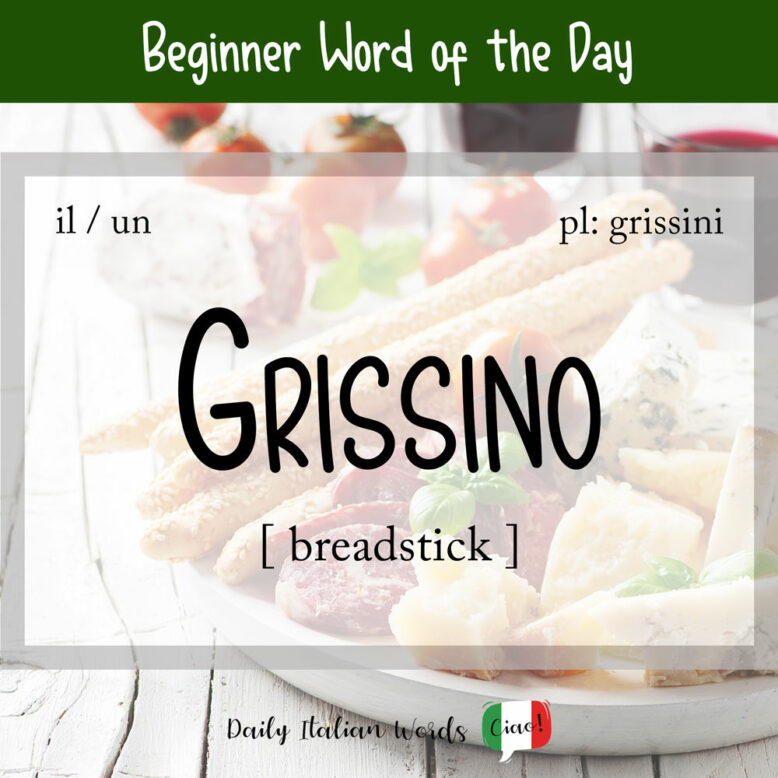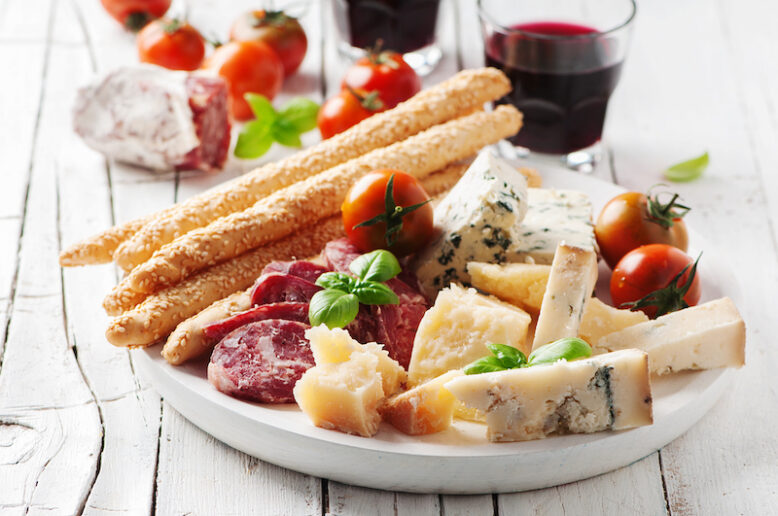Breadsticks, or grissini as they are known in Italy, are a staple of the Italian diet. When I used to live in Turin, my mother-in-law would always make sure to put a full jar of grissini on the table, just in case Mat and I were feeling peckish before or after supper. Needless to say, we would always devour them in an instant!
grissino
breadstick

Interestingly it is said that Turin – or at least the Piemonte region – is the actual birthplace of the humble “grissino”. The baker Antonio Brunero is credited with making them for Duke Victor Amadeus II of Savoy (1666-1732) who had digestive problems as a child, though it is suspected that variations on the Italian breadstick were being made in the areas surrounding Torino even earlier than this.
The basic ingredients required to make grissini are flour, salt, malt (or sugar), yeast, lard (or oil), water and semolina for dusting. Unlike bread loaves and rolls, they are less likely to spoil because they contain less moisture. This, along with their crunchy texture and portability, made them an extremely popular delicacy with the House of Savoy. Even Napoleon, who conquered Turin in 1801, was an enthusiast – so much in fact that he instituted a special daily courier service to send “les petits bâtons de Turin” to court in Paris!

Today grissini are popular throughout Italy and abroad. They come in various thicknesses and flavours, both sweet and savoury. Some are pencil-thin and brittle, like the traditional grissino Torinese, whereas others have a thicker consistency like the grissino Siciliano. They are often served as an appetiser at Italian restaurants to keep those hunger pangs at bay as you wait for your meal.
I personally have a soft spot for the traditional grissino Torinese, not only because I used to live in Torino but also because they never fill you up to the point that you don’t enjoy your main course. They are the perfect accompaniment to salads, soups, and pasta, and you can even use them as a kind of pseudo-cutlery to help your food onto your fork or spoon.

In the video below, you can see how Italian bakers from Chieri (small town near Torino) prepare the rubatà, Torino’s original grissino. Rubatà comes from the adjective robatà in the Piedmont dialect (Piemontese). It means fallen or tumbled down, and refers to the hand-rolled technique used to create the shape.
How about you? Do you eat grissini with your meals? What is your favourite kind of grissino? We’d love to hear from you in the comment section below!
Vocabulary:
- grissino = singular, masculine noun
- grissini = plural, masculine noun
- grissino stirato = straight breadstick
- grissino rubatà = hand-rolled breadstick
Useful phrases:
Mi piace mangiare grissini.
I like eating breadsticks.
I grissini sono perfetti da sgranocchiare quando hai fame.
Breadsticks are perfect to munch on when you’re hungry.
Sapevate che i grissini sono stati inventati a Torino?
Did you know that breadsticks were invented in Turin?
Mi sono dimenticato di comprare dei grissini per la cena di stasera. Puoi fare un salto in panetteria?
I forgot to buy some breadsticks for supper tonight. Can you go to the bakery?
Heather Broster is a graduate with honours in linguistics from the University of Western Ontario. She is an aspiring polyglot, proficient in English and Italian, as well as Japanese, Welsh, and French to varying degrees of fluency. Originally from Toronto, Heather has resided in various countries, notably Italy for a period of six years. Her primary focus lies in the fields of language acquisition, education, and bilingual instruction.


